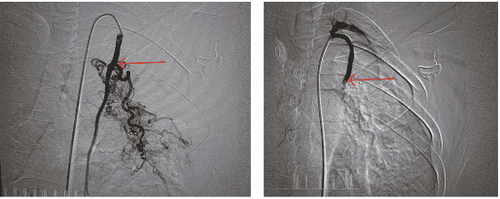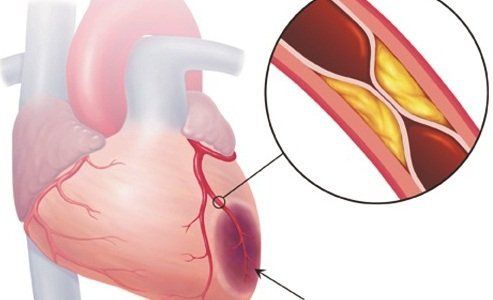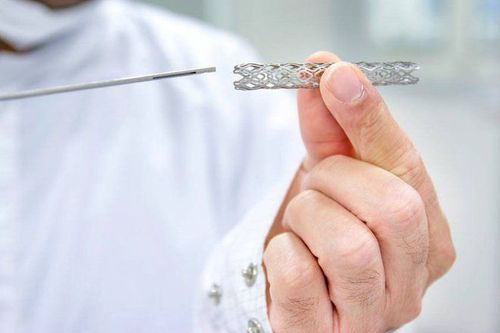This is an automatically translated article.
The article was professionally consulted by Dr. Ngo Dac Thanh Huy - Cardiologist - Department of Medical Examination & Internal Medicine - Vinmec Danang International General Hospital. The doctor has experience and strengths in the field of diagnosis and treatment of cardiovascular diseases, echocardiography, coronary angiography and intervention.Coronary heart disease is the leading cause of death in many countries around the world. In which, mainly coronary atherosclerosis leads to coronary artery occlusion. Therefore, the advantages of coronary angiography, dilation and stenting techniques have solved the problems of coronary artery disease.
1. Coronary angiography
1.1 Function of the Heart The main function of the heart is to pump blood to the lungs and to other parts of the body, and the heart muscle is also a living tissue, so they also need blood to nourish. Therefore, they also supply blood to the heart through blood vessels that go directly to the heart muscle. These blood vessels are called coronary arteries.1.2 Coronary artery disease Coronary artery disease occurs when one or more of these arteries is partially or completely blocked (usually by atherosclerotic plaques). When the coronary artery is narrowed by more than 50% of the lumen diameter, angina occurs.
Due to the accumulation of cholesterol, fatty acids and calcium in the coronary arteries and create atherosclerotic plaques that narrow the coronary arteries. So when doing physical activity, the heart will work to increase contractility, increase heart rate, increase blood pressure... to increase oxygen supply to the body. As a result, myocardial oxygen demand also increases. If the coronary arteries are narrowed, the blood supply to the corresponding myocardium becomes inadequate, the myocardium is deprived of blood and oxygen, causing angina.
Angina that occurs when the patient exerts himself and subsides when the patient is at rest, it is called stable angina. If atherosclerotic plaques in the coronary arteries crack or break, and the angina lasts longer than usual and occurs at rest, it is unstable angina. When a blood clot forms and completely blocks a coronary artery, it is called a myocardial infarction (MI).
1.3 Coronary Angiography Coronary angiography is a basic and widely used procedure in interventional cardiovascular procedures, with the aim of evaluating the entire coronary system in terms of formation. Coronary angiography is performed with the use of specialized catheters to introduce contrast material into the coronary artery lumen, thereby displaying the image of the coronary artery system on a bright screen. Based on these images, it is possible to evaluate the lesions of the coronary system including: stenosis, arterial occlusion, dissection, thrombosis,...
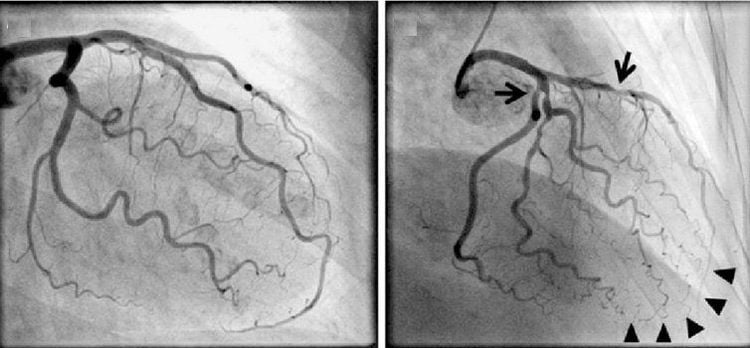
Unstable chest pain and myocardial infarction. Stable angina: coronary angiography for intervention when non-invasive investigations reveal high risk or large areas of myocardial ischemia, or the patient has not been controlled by optimal medical therapy. People with suspected or known coronary artery disease. Coronary angiography to check the heart and large vessels before surgery in the elderly (men > 45 years old, women > 50 years old). Noncardiac preoperative coronary angiography in patients with suspected coronary artery disease. After resuscitation, the circulation stopped outside the hospital. Chest pain that recurs after coronary intervention or after coronary bypass surgery. Heart failure of unknown cause. Coronary angiography to check for coronary artery abnormalities detected on coronary multislice computed tomography. Patients with dangerous arrhythmias (atrioventricular block, ventricular tachycardia,...) In some other special cases such as occupation, high-risk lifestyle, combined with other investigations,... Relative contraindications to coronary angiography include:
Patients in a state of severe infection Patients with a history of anaphylaxis to contrast agents Patients with severe renal impairment Patients with biochemical disturbances, electrolytes, anemia,... Decompensated heart failure Abdominal aortic aneurysm Uncontrollable hypertension
2. Angioplasty and stenting of coronary arteries
2.1 Coronary Intervention Percutaneous coronary intervention is through a catheter to thread the wire through the lesion and then raise the balloon and stent to widen the narrow or blocked area, and place the stent to circulate the artery. Coronary artery intervention may also be accompanied by other procedures such as thrombus suction, drilling to break the atherosclerotic membrane,... In contrast to coronary artery bypass surgery, which requires thoracotomy, coronary intervention can This is done by simply opening a small hole in the skin to insert the catheter into an artery in the thigh or wrist.The patient will be anesthetized at the puncture site so the procedure is no more painful than one blood test. The patient remains awake throughout the procedure. During coronary angiography, the doctor will show the patient with narrowed or blocked coronary arteries, the location of the blockage and the extent of the damage, whether angioplasty and coronary stenting are needed. The procedure is usually done within 1 hour and most patients can go home 1 to 2 days after the procedure is over.
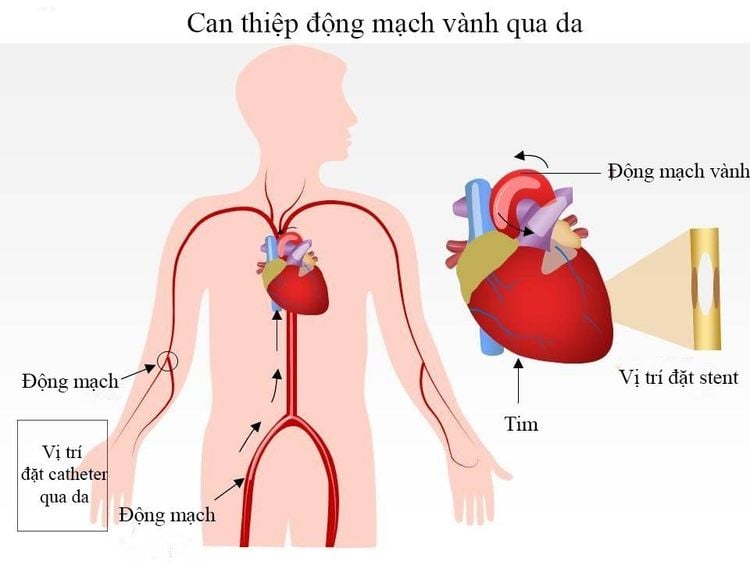
2.2 Risks The risks of this procedure include bleeding, infection, allergic reaction to the contrast used during the scan, risk of blood vessel damage, stroke, and kidney failure. In addition, stents placed in the coronary artery can suddenly become blocked and cause a myocardial infarction that requires revascularization or emergency bypass, which can even lead to death. The likelihood of an accident or not depends on many factors. According to the statistics of major researchers in the world, the risk of complications requiring emergency intervention or death related to coronary angiography is quite low, only about 1 to 2% of cases have coronary artery disease.
Before performing coronary angiography, the patient will be fully taken with some drugs such as aspirin, or clopidogrel, ... and need to stop some other drugs such as: diabetes drug metformin or coumadin. Patients with a history of allergy to contrast media may need to take certain anti-allergic drugs at least 1 day before the procedure to reduce the risk of a severe allergic reaction. It is best to tell your doctor if you are allergic to dyes or shellfish.
2.3 Angioplasty and coronary stenting technique Once in the intervention room, the patient will be transferred to the intervention table. Coronary angiography, dilation, and stenting can be performed through the inguinal, elbow, or wrist arteries. The procedure area will be absolutely sterile, cleaned and shaved, then disinfected and covered with a sterile cloth around. Before opening a small hole in the artery in that area, the surgeon will numb the area with a local anesthetic.
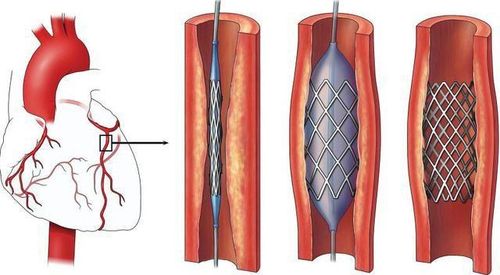
The doctor will choose a small or large balloon depending on the damage of the coronary artery, to insert angioplasty the narrow occlusion in the coronary artery. This balloon will help open the blockage by forcefully pressing the plaque against the vessel wall to open up the artery. In some cases, several subsequent dilations may be necessary with larger balloon sizes and with higher pressure to reduce the degree of obstruction. Usually, the degree of stenosis can be reduced by 20 to 30% with balloon angioplasty. Finally, one or more stents will be placed in the damaged sites to reduce the rate of restenosis after intervention.
In stenting technique, on top of a special guide wire a stent is placed outside the balloon. To open the stent and press on the coronary artery wall, the balloon must be inflated. The stent will remain in the lumen after the lead is removed, and acts as a support to prevent the lumen from narrowing.
Thanks to scientific progress, the development of drug-eluting stents reduces the risk of plaque growing back over time. The meshes on the stent will be coated with the drug. After the stent is inserted into the lumen of the coronary artery, the drug is gradually released into the vessel wall over a period of several weeks or months.
When an occluded coronary artery is treated with balloon angioplasty alone, there is an approximately 30% risk of recurrent stenosis causing recurrent symptoms of angina. If a stent is placed, this risk is reduced to about 20%. With drug-eluting stents, the risk of restenosis is reduced to only 5-10%. The surgeon will advise the patient's family whether to have a non-drug-eluting stent or a drug-eluting stent, depending on the individual case.
Before coronary angiography and stenting, patients are usually started on pre-interventional therapy with clopidogrel a few days. Clopidogrel, like aspirin, is a drug that reduces platelet adhesion. Clopidogrel and similar drugs should be used for at least 4 weeks following unencapsulated stenting. After the insertion of a drug-eluting stent, 6-12 months are required to prevent stent thrombosis.
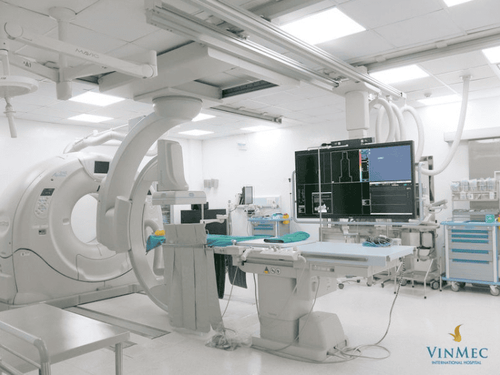
Stable angina that is not controlled by optimal medical therapy Stable angina with evidence of myocardial ischemia (positive stress test or radiotherapy) positive myocardial perfusion) and lesions in the coronary arteries that supply large areas of myocardium. Unstable chest pain/acute myocardial infarction without ST-segment elevation with high risk stratification. Acute myocardial infarction with ST elevation. Angina occurs after coronary artery bypass surgery. There are symptoms of coronary re-stenosis after percutaneous coronary intervention,... Contraindicated in the following cases:
Injuries not suitable for intervention (eg, diffuse severe lesions, lesions multiple coronary trunks, distal lesions, etc.). Coronary artery damage has a high risk of death if that coronary artery becomes blocked again during intervention. Visceral body prone to heavy bleeding (low platelet count, coagulation disorder,...). The patient did not comply with treatment before and after the intervention procedure. Re-stenosis of many sites after intervention,... Note: many patients have relative contraindications, but percutaneous coronary intervention is their only treatment option.
To prevent coronary artery disease, it is recommended to exercise regularly, avoid excessive stress, quit smoking, monitor and treat diseases such as hypertension, dyslipidemia. , diabetes, obesity, maintaining an ideal weight. Follow a light diet, open diet and animal organs, limit eating eggs, sweets, do not drink too much beer and alcohol.
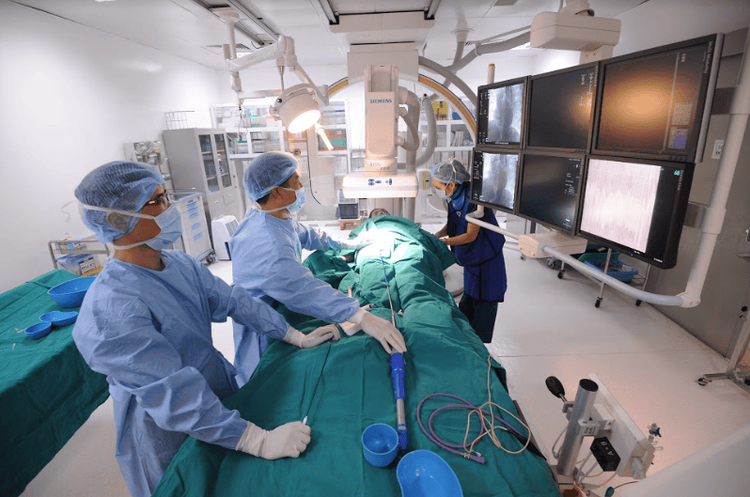
When there are symptoms of intermittent angina, especially during exertion. Immediately go to a cardiology medical facility to be examined, do tests and diagnose whether you have coronary artery disease or not, for advice and appropriate treatment.
In April & May 2021, when there is a need for cardiovascular examination and treatment at Vinmec International General Hospital, customers will enjoy double incentives:
- Free specialist examination and 50% discount many cardiology packages such as:
+ Basic Cardiovascular Screening Package
+ Hypertension Checkup Package
+ Heart Failure Checkup Package
+ Coronary Cardiovascular Examination Package
+ Comprehensive Cardiovascular Checkup Package
- 50% off cost Fees for customers with post-examination treatment indications. The program is limited to the corresponding technique of each hospital and to customers who perform this treatment technique for the first time at Vinmec.
Please dial HOTLINE for more information or register for an appointment HERE. Download MyVinmec app to make appointments faster and to manage your bookings easily.






